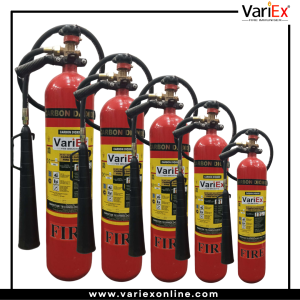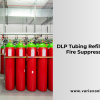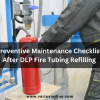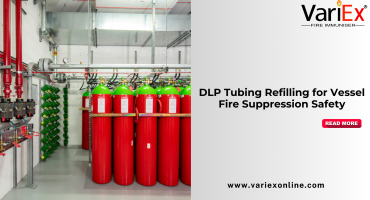![]()
Fire Immuniser
+91-7829629111
Email: info@variex.in
Varistor Technologies Pvt. Ltd.
Block-1, First Floor, Ardente Office One, Hoodi Circle, ITPL Main Road, Bengaluru, Karnataka 560048, IN
Carbon Dioxide Fire Extinguisher Use
Carbon dioxide (CO2) fire extinguishers are vital safety tools used to suppress fires involving flammable liquids and electrical equipment. Understanding how to use them effectively is crucial for safeguarding lives and property. Here's everything you need to know about carbon dioxide fire extinguisher use:
- Carbon dioxide extinguishers work by displacing oxygen, which starves the fire of the oxygen needed to sustain combustion.
- The CO2 gas is stored under high pressure in the extinguisher's cylinder. When discharged, it rapidly expands and cools, forming a blanket over the fire, suffocating it.
2. Suitable Fire Classes:
- CO2 extinguishers are primarily effective against Class B (flammable liquids) and Class C (electrical) fires.
- They are not suitable for Class A (ordinary combustibles) fires, as they lack the cooling effect necessary to extinguish these types of fires effectively.
3. Safe Usage Guidelines:
- Before using a CO2 extinguisher, ensure you are trained in its operation and have assessed the fire situation to confirm it's safe to fight.
- Pull the safety pin, aim the horn or nozzle at the base of the fire, squeeze the handle, and sweep from side to side until the flames are extinguished.
4. Limitations:
- While effective for certain types of fires, CO2 extinguishers have limitations. They may not be suitable for deep-seated fires or fires involving combustible metals.
- CO2 extinguishers do not provide post-fire security, as the gas dissipates quickly, allowing the fire to reignite if the source of the fire is not removed or cooled.
5. Safety Precautions:
- Always stand a safe distance away from the fire when using a CO2 extinguisher to avoid injury from heat or flames.
- Be cautious of frostbite when handling the extinguisher, as the discharge of CO2 can cause the horn or nozzle to become extremely cold.
6. Maintenance and Inspection:
- Regular maintenance and inspection of CO2 extinguishers are essential to ensure they remain fully charged and operational.
- Inspections should include checking the pressure gauge, inspecting the extinguisher for damage, and verifying that the safety pin is intact.
7. Evacuation and Emergency Procedures:
- If the fire cannot be controlled with a CO2 extinguisher or if conditions become unsafe, evacuate the area immediately and alert others to do the same.
- Contact emergency services and follow established evacuation procedures to ensure everyone's safety.
Carbon dioxide fire extinguishers are valuable assets in combating specific types of fires, but proper training, maintenance, and adherence to safety protocols are essential for their effective use. By understanding their capabilities and limitations, individuals can play a crucial role in fire prevention and safety.
Frequently Asked Questions
A CO2 fire extinguisher is a portable device that uses carbon dioxide gas under pressure to suppress fires by displacing oxygen, thereby suffocating the flames.
CO2 extinguishers are primarily effective against Class B (flammable liquids) and Class C (electrical) fires. They are not suitable for Class A (ordinary combustibles) fires.
CO2 extinguishers work by discharging pressurized carbon dioxide gas onto the fire, which displaces oxygen and suppresses the combustion process, effectively extinguishing the flames.
Always ensure you are trained in the proper use of the extinguisher and assess the fire situation to confirm it's safe to fight. Stand a safe distance from the fire to avoid heat or flame exposure and be cautious of frostbite from the cold discharge.
No, CO2 extinguishers are not suitable for all fire classes. They are ineffective against Class A fires (ordinary combustibles) and may not be suitable for deep-seated fires or fires involving combustible metals.
Final Say
We at VariEx.in or Variexonline.com have mastered the art of designing, installing, inspecting, and fixing automatic sprinkler systems with the help of our in-house team, which is capable of delivering the fire sprinkler services you need, whether large or small and at affordable cost.
To schedule a fire sprinkler installation, or you think our services could benefit your commercial property, contact us online or give us a call at, 7829629111
"WHAT YOU CAN READ NEXT"
 Read more +24 November 2023 in Fire Extinguisher
Read more +24 November 2023 in Fire ExtinguisherWhat types of fire extinguishers are available for different fire classes?
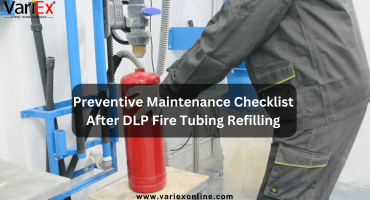 Read more +11 July 2025 in Fire Suppression
Read more +11 July 2025 in Fire Suppression

